This article seeks to answer the question of what painting is and why it is formed. In fact, from primitive to modern samples, what has been supplying for human needs, or what message did they convey, and what was the hidden content? Why do scientists and artists today seek to discover paintings and designs that were created thousands of years ago and are constantly looking for the reason for the painting? In general, what is the evolution of painting and what has painting been like from the distant past to the present? To answer these questions, join us in this article by Maryam Mansouri.
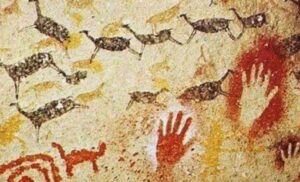
What is a painting?
What is the answer to the painting question? It can be said that painting is an aesthetic phenomenon for expressing ideas and feelings in the language of two-dimensional images, and the elements of this language use its shapes, lines, colors, tones, and textures in different ways to create sense, volume, space, movement and light on one. The surface is smooth.
What is the history of painting and when does it go back?
To answer the question of what is the history of painting formation, it must be said that the emergence of painting dates back to prehistoric times. That is when nomadic people used carvings and inscriptions on rock walls to convey a message. So, when they passed by the cave, they drew designs on it with charcoal.

Recently, works of a painting style have been discovered in Spain that show the oldest man-made paintings to date, dating back to 42,000 years ago.
Who created the first human paintings?
The first paintings were made by primitive men, believed to have been created by Neanderthals in prehistoric times. Archaeological excavations in Europe, Africa, and Asia show that primitive humans were the first painters and sculptors to depict the shape and manner of their daily lives through such arts.
Archaeologists and anthropologists are currently studying and dating such works. This style of handicraft is a true historical document of the beginning of human life in ancient times and represents cultures that are now extinct. As mentioned, the artifacts discovered in Malaga, Spain, show designs more than 42,000 years old that could change our perceptions of the evolution of humanity.
Before this discovery, archaeologists thought that the oldest work of art in the Origen period was created by modern man; However, a study of the works showed that this style of painting in Spain is much older and more primitive than the paintings in the Chauvet-Pont-d’Arc Cave, which are the oldest paintings discovered and they are 32,000 years old.
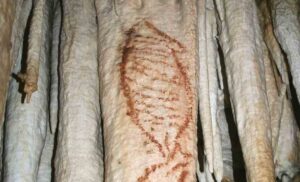
Where were the first paintings registered?
believing is that the first designs, known as “rock painting” or “rock art”, were created in shelters and caves where nomads took refuge to protect themselves. The first works of art discovered by archaeologists are vibrant paintings that use almost a variety of three colors in their combination, and these are paintings that are based on the observations of early humans.
In other words, human beings have imitated them during the hunt with the maximum realism of nature. In a cave in Altamira, Spain, there are rock carvings of American humpback whales, which are remarkable for their size and use of the Chiaroscuro technique. Some other examples in which animals are marked with arrows highlight the success of humans in the hunting process.
All of this shows what painting is and the desire to create art has always existed in humans. This may be a kind of desire to record the daily life of that time, but in any case, the rock art that has been preserved for thousands of years has allowed us to turn these rocks into the first museums of humanity these days. The existence of these amazing works made human beings find their way to answer the question of what is painting.
What are the basic tools for painting and what elements did man look for in painting?
Now the question arises, what is a painting tool? From the beginning, human beings have left traces of their existence with paint and painting tools. Throughout thousands of different levels, from cave walls to wood, papyrus, walls, and now screens, there have been platforms for human art. Like the levels, tools, and techniques of painters have changed and evolved. In the beginning, the bones or hair of cavemen were the first painting tools, today some works of art are inconceivable without a roller or a spray machine.
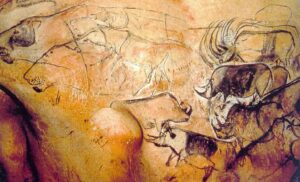
What is the history of painting?
The infographic “Evolution of Painting Tools” intelligently shows the development of painting tools and handicraft techniques from the Stone Age to the present day. How many models of painting styles have been classified in the distant past?
These paintings are classified into 10 historical periods: The Middle Ages, the Early Renaissance, the Northern Renaissance, the Great Renaissance, Stylistics, Baroque, Rococo, Neoclassical, Romanticism, and Realism.
Scientific studies show that works of art have become more colorful since the Middle Ages and more complex in terms of brightness and contrast. Digital analysis of nearly 9,000 paintings in 10 historical periods (over 800 years) depicts changes in artists’ palettes and identifies signatures that are consistent with the development of new artistic techniques.
Hawong Jeong and his colleagues Used digital imaging techniques, they used colors, color diversity, and light diversity to examine 8798 Western works of art dating back to the eleventh to mid-nineteenth centuries.
Analyzes show the quantitative expansion of the color palette in the history of European design art after the medieval period, which resulted from the introduction of oil paints and new types of color pigments. The increasing contrast of light reflected in the study of these works reflects the development of Renaissance painting techniques, such as sfumato (expression of the gradual fading between object and background, used by Leonardo da Vinci, 1452-1519) and Chiaroscuro (strong contrasts between lighting). And the darkness used by Rembrandt van Rijgin in 1606-1669).
For many years, the study of these historical works of art has been explored not only by artists but also by historical scholars.
Historians have theorized that the use of scientific techniques to analyze images creates a bridge between the world of art and science.
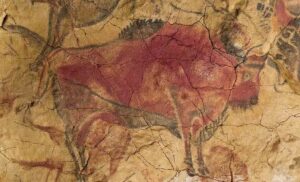
Basic painting methods
Considering that the use of colors in painting is very interesting and is the best painting tool for creating works of art, it is necessary to know how different types of colors emerged at the beginning and what is the basic method of painting?
To understand the history of materials and techniques and the style of painting, you need to know a few basic terms. The paint is finely ground from pigments, chemical or mineral powders, and a viscous or liquid substance that allows the paint to disperse. Many popular pigments have remained unchanged for centuries and are still in use.
But as time went by, the materials and bases of the paints or adhesives changed colors and offered different qualities that appealed to artists. Another evolving element was the fulcrum or surface on which artistic engravings were created. Common supports include wood paneling, canvas, and paper.
However, cultures around the world from prehistoric times to the present have used many materials and techniques to create this art, which is very widespread. In this opportunity, we focus on several raw materials of handicrafts that have been important to Western art.
which tools the Tempera painting use?
The most common color in the early arts was tempera, sometimes called egg tempera, and it was made from a pigment mixed with egg yolk and water. Tempera was not the only painting tool in the ancient world. Some artists used a firmer blend of pigments mixed with molten wax to create the art of oncological painting. This compound works quickly and is applied in many layers because it hardens as the wax cools.
therefore, tempera painting was done on large wooden plates by covering them with gauze (a white absorbent made of plaster or plaster and animal skin glue). Gesso helped the paint to stick to the support. In this style of painting, if an artist wanted to make a large painting, he would first draw parts of it on different pages and then connect them. During the Middle Ages, artists created beautiful works with tempera, but after that, a new color replaced it.
The emergence of oil painting works art
Researchers do not know exactly who invented oil paint as a painting tool. Early evidence shows scattered oil paints in places such as northern Europe and ancient Afghanistan. In the early Renaissance (c. 1400-1479), some artists began to cover Tempera paintings with a thin layer of oil paint. When they did, they found that the surface of the art image became glossier and added more depth and radiance to darker shades and colors, and this experience led to the formation of a new kind of color. Oil paint is made from natural oil pigments and adhesives such as flaxseed or walnuts. This type of paint initially had a thick, spherical consistency and dried slowly when exposed to oil.

The evolution of painting
Painting developed in ancient Greece around the 11th century BC and brought several innovations. The development of visual perspective style and volumetric shadows to give 3D depth to display complex scenes led to the formation of more realistic paintings, in addition, humans created a more natural and ideal model of a model, which these days We know it has become. The materials used at that time were egg-based tempering, wax-based enameling, another Greek innovation, and murals using mineral and plant pigments in aqueous media. The colors were preferably white, black, ocher yellow and red. The colors green and purple were less durable and less used, and blue was very expensive, produced by grinding a semi-precious stone called azure. All of these techniques and motifs became the basis of Roman and then Western painting styles, and are still widely used today in the practice of contemporary painting, teaching people what painting is.
When did modern works of art take shape?
“Modern painting” is commonly referred to as art produced between the 18th and 19th centuries. Artists who were bothered to follow the rigid art style that was prevalent felt that they had to push the boundaries and change them. They broke away from the realism and traditions of the past and began experimenting with new themes, materials, tools of painting, bold techniques, and colors to create a spectacular painting style that reflected progressive thinking.
Not surprisingly, this stage of modern art was initially rejected and ridiculed. However, as the shock subsided, different styles began to accelerate and soon became a source of inspiration for new generations of artists.
Here are some modern painting styles that artists follow even today:
Impressionism, Abstract Painting, Surrealism, Cubism, and Expressionism
The future of painting with the arrival of new technologies
Technology has greatly influenced art; It has opened up many opportunities for artists and increased the number of techniques that artists can access in the style of painting. Today’s artists can create stunning handmade images on the iPad as well as brush and paint on canvas.
What is the impact of technology on 21st century paintings?
What is the future of painting? The perspective of painting in the future will be born of a combination of art and science. The first works of prehistoric painting have been recorded. Early human cave paintings show that they were previously eager to express themselves in this way, even though they had very basic tools and sometimes even created paintings by engraving. And for several years now, modern painting tools such as watercolors, oil paints, brushes, and so on have become obsolete. Now everything is changing.
The collaboration of scientists and artists Adobe Research has revolutionized the creation of digital painting technology that heralds a new painting tool through painting and drawing software.
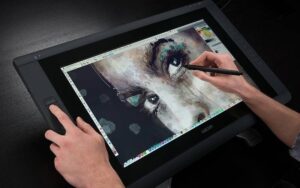
But what is the purpose of this type of painting? This new technology is used in the visual arts to satisfy the audience, traditional analog painters who want to seamlessly simulate and realize their digital “color”.
The powerful results of this alliance of technology and creativity can now be found at the heart of Adobe Fresco, a mobile painting program developed that was published by the Adobe Fresco team. This great software as a modern painting tool in the first fall of 2019 was praised by artists who can now use real watercolors and oil paints on a digital platform. (This app is currently available for free for iOS and Windows mobile devices.)
The fresco was born from a fusion of science and art, a collaboration that made this new technology shine even for traditionalists.
Digital art is not entirely new, but creating a “real” feeling on the platform has been a difficult path for artists. Scientists have been studying “natural media simulation” in digital painting for more than a decade before the latest efforts began. The team was interested in creating software for the mobile tablet device. But they found that, for example, in the early version of the iPad, creating the physical properties of working with color was challenging.
What is painting technology and how does it help digital painting?
Digital painting is an emerging art in which traditional painting techniques such as watercolor, oil, impasto, etc. are using digital tools and using computers, tablets, and graphic software.
With the advent of the Internet, digital art has evolved significantly and shown differently what is painting? To begin with, it allows art to be more accessible to artists and viewers. It also provides a broad platform for artists to explore digital art and use it as a medium to spread their creativity and interact with their audiences.
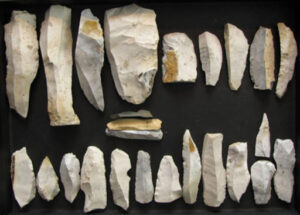
What is the significance of painting?
to answer this question, what is the importance of painting? It must be said that the root of the importance of painting is because it is as old as the history of mankind. Historians, philosophers, anthropologists are trying to find answers about our existence, and handmade drawings are one of the ways they use to explain the development of extinct civilizations and cultures. Hence, we better understand the history of humanity through art and the response to the question of painting.
Ever since the cave paintings have made by primitive peoples, man has been trying to express ideas, activities, daily life, and the way he looks at the world around him, seeking to reveal the world around him. That is why the history of art is usually recorded in more periods when people are looking for the development of civilizations and paintings are a good representation of sensitive times in these periods. So what does a human being ask the question of painting is seeking to decipher historical events.
With all these descriptions, what is the answer to the painting question? We come to the great conclusion that human beings from the beginning of existence until now have used different styles of painting to express their inner selves. To do this, they produced a tool for creating engravings from any tool around them. In the past, people were more likely to depict their lifestyles and drawings were simpler, but now painting with advanced digital tools has become more complex and it’s meaning more difficult.
But still questions like what is painting, what is the style of painting, and what are the tools of painting well give us a description of the inner state of a person and the society in which he lives.
In the end, we hope to enjoy the “what is a painting” article.

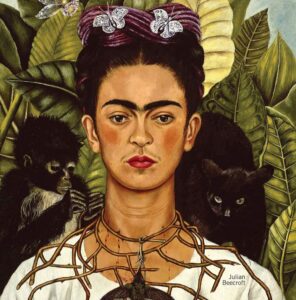
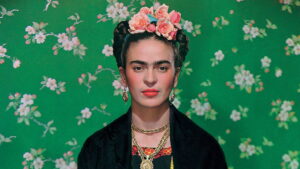

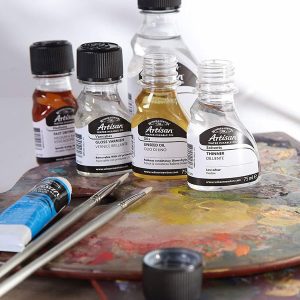

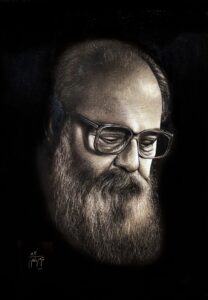

2 Responses
Very good
I got many things.
The articles were very good. thank you